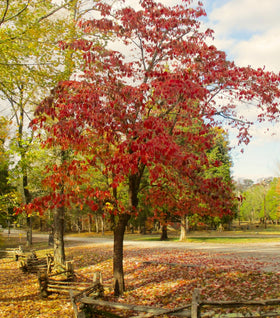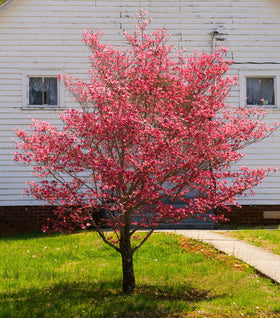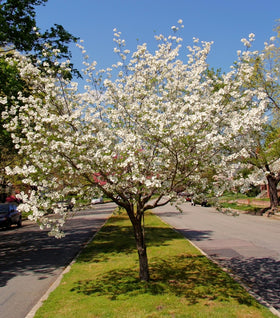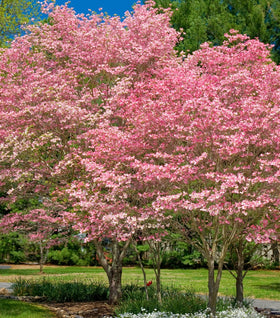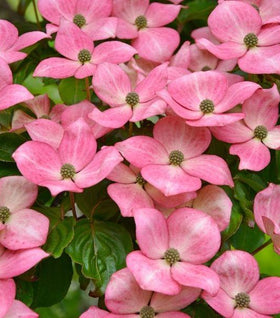Flowering Dogwood Trees
If you’re dreaming of a spring show that stops traffic and starts conversations, a flowering dogwood is the move. Those iconic white, pink, or red flowers arrive just as the garden wakes up, floating above tiered branches like lanterns. Through summer, dogwood’s dappled shade protects turf and understory plants, then leaves flare crimson in fall, with winter berries on many selections to feed songbirds. It’s four-season curb appeal in one elegant, manageable tree.
At Garden Goods Direct, we curate landscape-proven Cornus florida, kousa, and hybrid dogwoods chosen for clean foliage, reliable bud set, and strong branching—the real-world traits that matter once the tree is in your yard. You’ll see honest height and spread, clear siting notes (morning sun + afternoon shade in warm zones is gold), and practical spacing guidance so you buy the right dogwood online the first time. Whether you’re framing an entry, softening a woodland edge, or pairing with hydrangeas along a front walk, we’ll help you pick the cultivar that delivers the exact look you pictured.
Every tree is nursery-grown, zone-ready, and shipped with care—backed by our "We Grow Together' Promise and friendly support from gardeners who actually grow these plants.
Why Choose Dogwoods: Signature Spring Flowers and Four Seasons of Curb Appeal
Dogwoods deliver the landmark spring display homeowners love—large, showy white, pink, or red bracts that open before or with foliage. Throughout the summer, they cast dappled shade that’s gentle on turf and underplantings; autumn brings scarlet to burgundy leaves, and winter shows tiered branching, along with ornamental berries (on many selections), for wildlife value.
Forms, Colors & Timing: Florida, Kousa & Hybrid Dogwoods Explained
Cornus florida (Flowering Dogwood): Classic horizontal tiers, early bloom, and luminous white or pink bracts; thrives with morning sun + afternoon shade in warmer zones. North American Native Tree
Cornus kousa (Kousa Dogwood): Later bloom extends the season, pointed star-shaped bracts, excellent disease tolerance, and attractive mottled bark.
Hybrids (florida × kousa): Best of both worlds—showy bracts, stronger foliage, and broad adaptability for suburban landscapes.
Design That Works: Front-Door Statements, Woodland Edges & Understory Layers
Front-Yard Focus: Center a specimen in a lawn panel; underplant with spring bulbs and low evergreens to frame the bloom.
Woodland Edge: Tuck along filtered-light borders where tiered branching reads architectural against darker conifers.
Layered Beds: Combine with hydrangeas, azaleas, and ferns; dogwood’s dappled light protects shade companions and keeps color rolling from spring to fall.
Dogwood Planting & Care Made Simple: Sun, Soil, Spacing & Pruning
Planting: Site in well-drained, slightly acidic soil with full sun to part shade (best bloom occurs in at least 4–6 hours of sun; afternoon shade is beneficial in hot summers). Plant with the root flare at or slightly above grade in a hole 2× as wide as the root ball; backfill with native soil, water deeply, and mulch 2–3″ (pulled back from the trunk). Keep the soil evenly moist during the first season; once established, water deeply but infrequently during dry spells.
Pruning: Minimal—remove dead/crossing wood and fine-tune shape after bloom or in late winter.
Spacing (quick guide): 15–20 ft on center for stand-alone trees; 12–15 ft for informal groupings.
Finish the look with Evergreen Shrubs for year-round structure, Deer-Resistant Perennials along the drip line, and Pollinator Plants to support early visitors during bloom.

